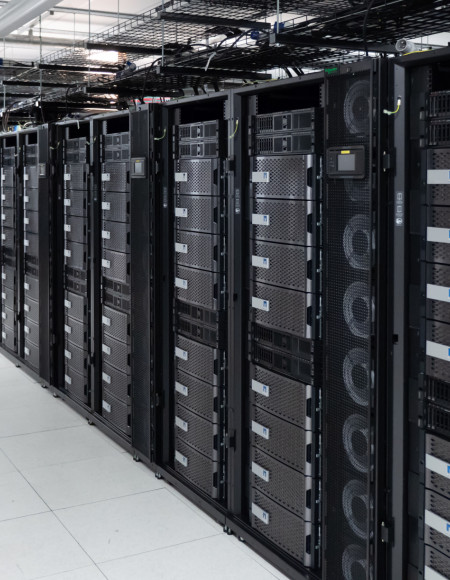We run the fastest filesystems in the Southern Hemisphere, linking high-performance computing (HPC) with high-performance data (HPD) via 100-gigabit network links. NCI's filesystems, catering to the needs of our research community, enable the next generation of computational tasks, including High-Throughput Computing (HTC).
NCI’s filesystems contain around 90 Petabytes of data storage capacity, providing space for research data to be stored in five separate global Lustre filesystems, reaching a total aggregate IO performance of around 450 GB/second.
NCI also runs a special IO Intensive Platform, a dedicated filesystem using 576 2-Terabyte NVMe drives for a cumulative performance around 960 Gigabytes per second.
On top of this, NCI also stores 70+ Petabytes of archival project data in state of the art magnetic tape libraries. In total, NCI runs more than 15,000 hard drives from vendors including NetApp, DDN and HPE.
Our fastest filesystem, /scratch, provides data storage for active IO taking place on the Gadi supercomputer.
Technical Specifications /scratch
- 7,200 4-Terabyte hard disks in 120 NetApp disk arrays
- 20 Petabytes total useable capacity
- 980 Gigabytes per second maximum performance
